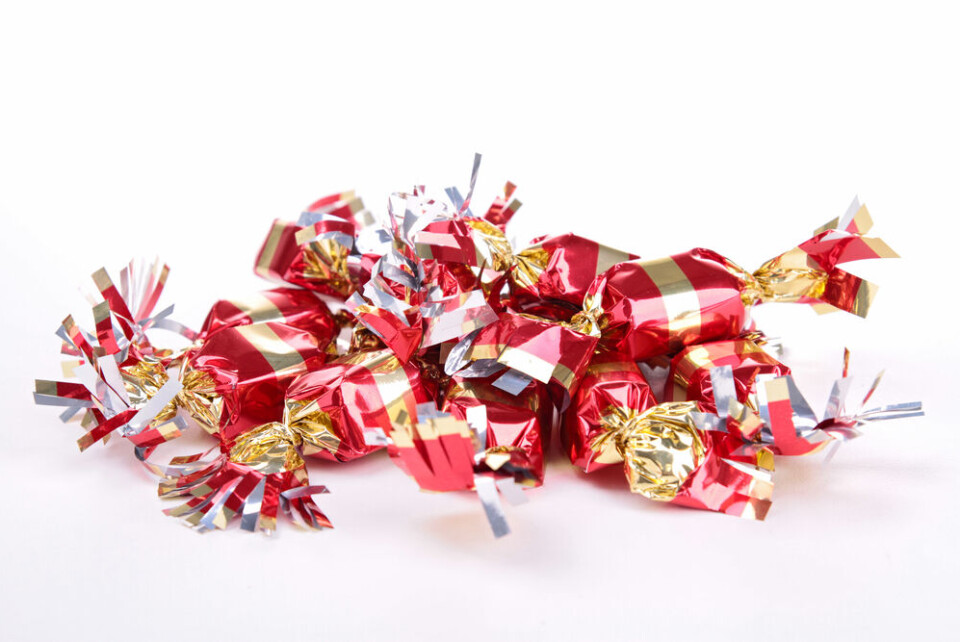-
Must restaurants serve you free tap water in France?
There are several rules surrounding beverages in French restaurants
-
Egg shortage in France: Where to find them and when they will return
Shortages are set to continue, with a minister blaming ‘restrictive laws’ on chicken coops
-
Eating alone at work in France: are attitudes changing?
Why the social taboo is being reconsidered in the modern workplace
Day 11 French regional Christmas specialities: Papillotes from Lyon
The origin of papillotes is wrapped in a cute story

Every day from December 1-12, The Connexion will be sharing a French regional Christmas speciality. Today we look at papillotes from Lyon.
What are papillotes?
Papillotes are - in their simplest form - ground nuts enveloped in chocolate, and wrapped in paper.
But the origin of papillotes is mired in legend, rumour, and many unknowns. The original tale is believed to have taken place in the Terreaux district in Lyon (Rhône-Alpes) around the late 18th century.
Papillot, a local confectioner, wants to investigate why chocolates and sweets keep mysteriously disappearing from his shop. He learns that the thief is his newly-hired trainee, who has fallen in love with a woman and gifted her chocolates wrapped with love messages and texts.
There are two versions of the tale from that point.
The first version has it that Mr Papillot fired the trainee, but kept the idea and named it after himself, hence the sweet’s name becoming ‘papillote’. The second has the trainee marry his sweetheart, who turned out to be Mr Papillot’s niece, and remain working at the shop.
Historian Bruno Benoit has said in the ‘Dictionnaire historique de Lyon’ (Stephane Baches / Les Cuisinières, 1999) that the word already existed in the region as early as 1617.
Papillote then referred to bits of paper that were wrapped around strands of hair to curl them. And cooking something en papillote means wrapping it in paper to bake it.
The sweet ‘papillote’ became a nationwide sensation after two families from the Lyon region opened the Révillon chocolate factory in 1898. The company sells 400 million papillotes each year, with a peak in sales during the two weeks prior to Christmas.
It has become so popular over the last few years that some French families of Southern France have included papillotes as part of their Treize desserts selection (see Day 5).
How do you bake it?
Papillotes require such specific tools and cooking processes that it is almost impossible to do them yourself at home
A France 3 programme visited the Voisin chocolate confectionery shop in Lyon, to take a look at the steps that go into producing a proper papillote.
The nuts are harvested during the autumn and kept for months at 8C. They are then opened an hour before being roasted, and put into a large pot full of sugar. They are then cooked for 45 minutes at 180C.
They are then left to rest for an hour before being ground up. The result is drenched in chocolate, and then wrapped in paper.
But unlike the gifts from Mr. Papillot’s trainee, the paper that wraps each papillote now features proverbs or famous citations, instead of love letters.
Related articles
Day 1 of French regional Christmas specialities: Crépinettes
Day 2 of French regional Christmas specialities: Bredeles of Alsace
Day 3 of French regional Christmas specialities: Foie gras
Day 4 of French regional Christmas specialities: Chapon farci
Day 5 of French regional Christmas specialities: Treize desserts
Day 6 of French regional Christmas specialities: Vin chaud
Day 7 of French regional Christmas specialities: Pain d’épices
Day 8 French regional Christmas specialities: Cardons from Rhône-Alpes
Day 9 French regional Christmas specialities: Escargots persillés
Day 10 French regional Christmas specialities: Beerawecka from Alsace
























